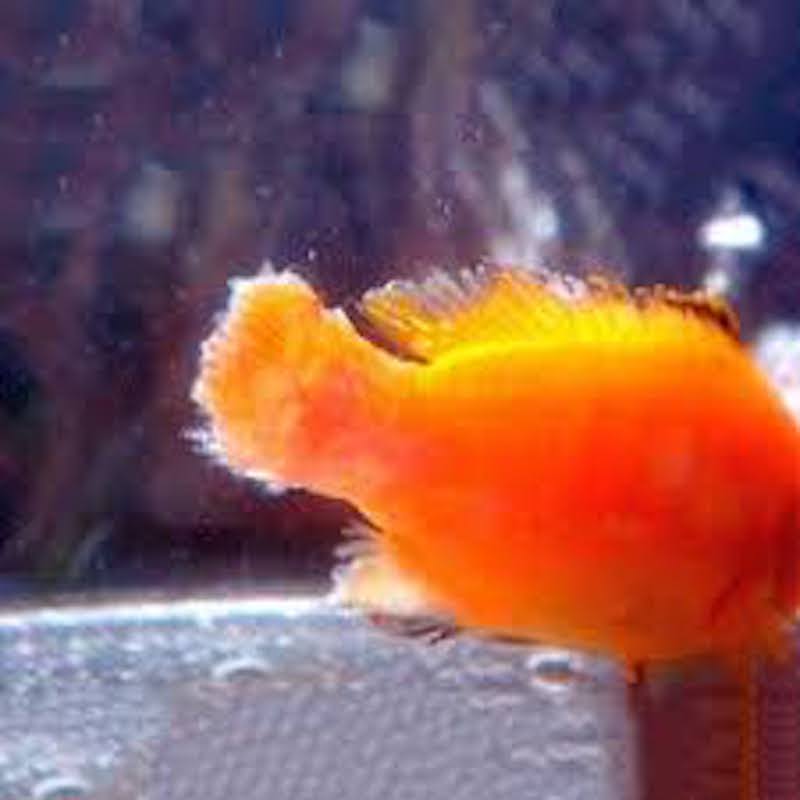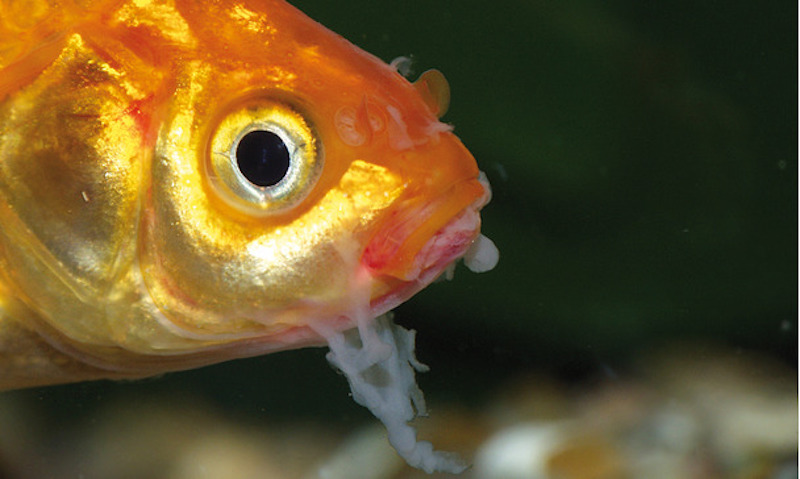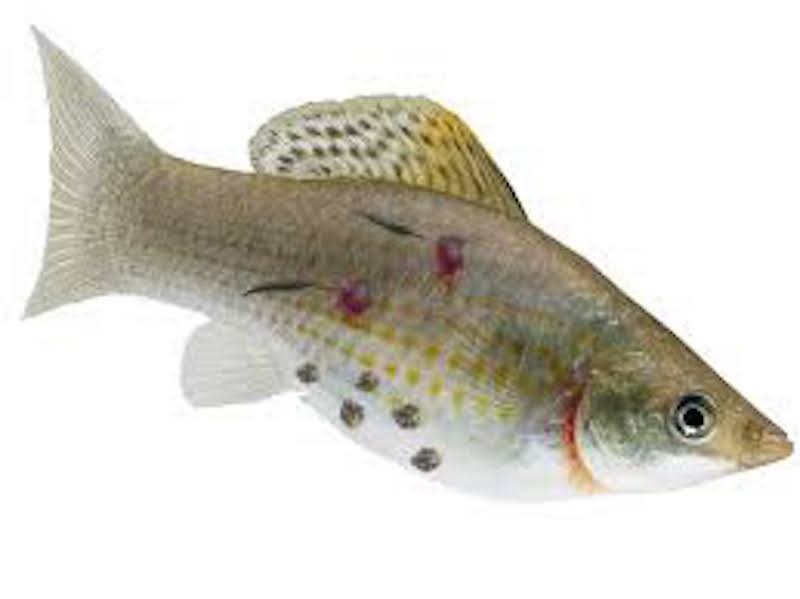[Q&A] The Ultimate Care Guide for Goldfish
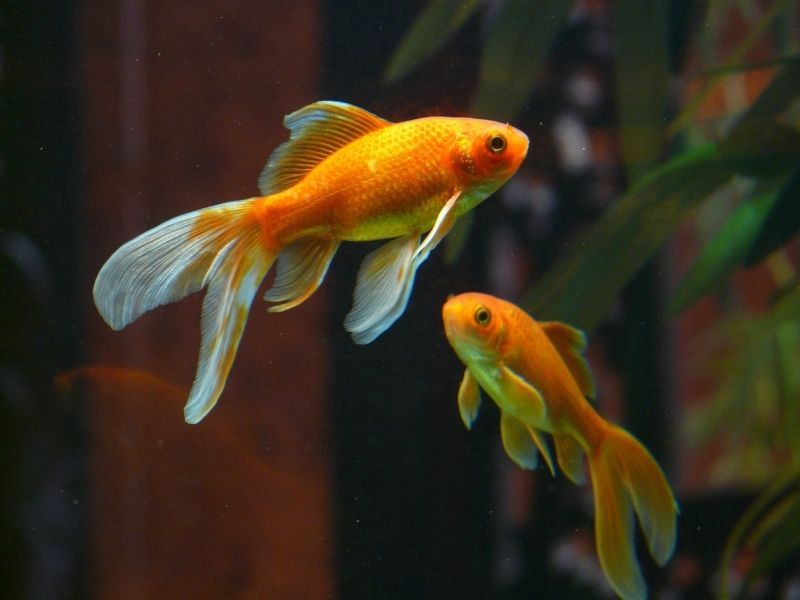
Goldfish are one of the most popular pets for aquarium enthusiasts, known for their vibrant colors and peaceful nature. However, ensuring they remain healthy requires proper care and attention. In this comprehensive Q&A, we address common questions and provide expert tips to help you keep your goldfish healthy and happy.
1. Are Goldfish Easy to Take Care Of?
Goldfish are relatively easy to take care of, making them suitable for beginners. However, they do require proper attention to their diet, tank conditions, and overall health to thrive.
How Long Do Goldfish Live?
Goldfish can live for 10 to 15 years, with some reaching 20 or more with adequate care. Diet, tank circumstances, and disease prevention are all factors that influence life expectancy. Here are important variables for increasing their lifespan:
- Diet: A balanced diet is essential for the fish and should include high-quality flakes or pellets for goldfish, along with fresh vegetables and occasional protein sources such as brine shrimp or bloodworms.
- Tank Condition: Maintain a stable atmosphere and avoid abrupt changes in temperature or water chemistry. Goldfish flourish in aquariums with enough filtration, space, and frequent water changes.
- Disease Prevention: Keep an eye out for any signs of illness in your goldfish. Early detection and treatment of ailments like fin rot or ich can significantly increase their life expectancy.
How Big Can Goldfish Get?
Common goldfish can grow up to 12 inches, while fancy varieties typically reach 6-8 inches. Their size is mostly determined by three factors: tank size, nutrition, and overall health. Below are some methods to help goldfish grow:
- Spacious fish tank: Large fish tanks promote higher fish growth. A goldfish needs at least 75 liters (20 gallons) of water, with an extra 38 liters (10 gallons) for each additional fish. Consider preparing a huge aquarium to be your goldfish’s pleasant playground!
- Diverse diet: Goldfish require a well-balanced diet. High-quality pellets should be mixed with fresh feeds like mealworms, frozen shrimp, and green vegetables. However, overfeeding can result in obesity and stunted growth. The golden guideline is to feed only what they can consume in two minutes.
- Stay healthy: To avoid stress and sickness in fish, keep the water clean and clean the tank on a regular basis. Healthy fish will be more resistant and develop naturally.

With proper care, including a large tank, a balanced diet, and a clean living environment, you can help your pet goldfish grow healthy and enjoy a long, happy life!
2. What Should You Feed Goldfish?
Feeding your goldfish a well-balanced and diverse food is essential for their health and lifespan. Goldfish are omnivores, which means they need a variety of plant and animal foods to survive. Understanding the types of food, feeding schedules, and dietary requirements will help you keep your goldfish aquarium healthy.
Eating Traits of Goldfish
Goldfish are omnivores and require a balanced diet of flakes, pellets, and fresh foods. Their diet should mimic what they would find in their natural habitat.
- Flakes: Goldfish rely on flakes as their primary food source. They float on the water’s surface, promoting natural eating activity. Choose high-quality flakes designed exclusively for goldfish, with a balance of proteins, lipids, and carbohydrates.
- Pellets: Pellets are another popular commercial food. They appear in both sinking and floating versions. Sinking pellets are frequently favored because they limit the possibility of air ingestion (which can lead to swim bladder problems). Soak the pellets before giving goldfish to keep them from growing in the fish stomach.
- Fresh foods: Specifically, fresh veggies are high in fiber and minerals. Goldfish prefer leafy greens such as spinach, lettuce, and kale. These should be blanched (briefly boiled) to soften and make digestion simpler. Other appropriate veggies are peas (with skins removed), zucchini, and cucumber.
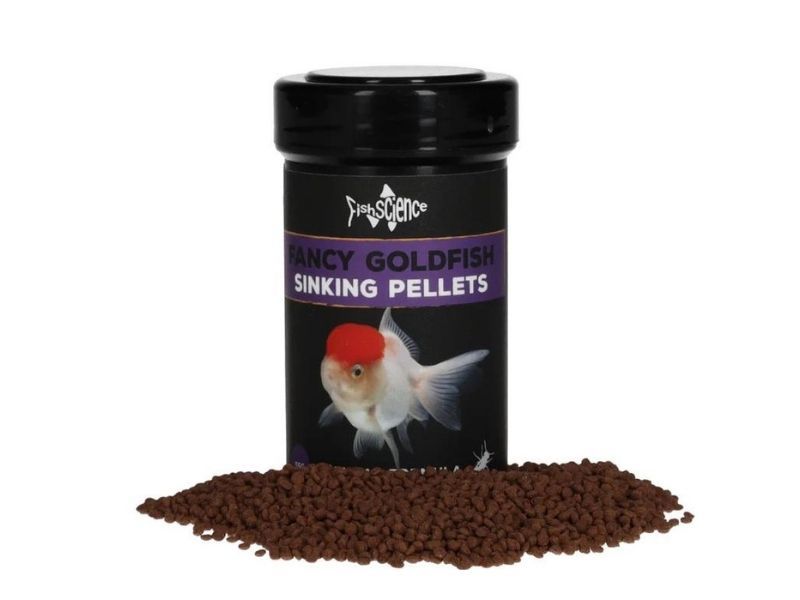
Diet & Feeding
Include leafy greens, brine shrimp, and bloodworms for variety. This mix ensures they get all necessary nutrients. Fresh foods should be given in moderation to avoid water quality issues. Here are some specific foods to consider:
Diet
What goldfish need to survive? Here are some substances needed for fish growth:
- Protein and fat: In addition to brine shrimp and bloodworms, you can occasionally feed them daphnia or tubifex worms. These provide essential proteins and fats. In addition, we can provide commercial foods for fish because they contain high-quality goldfish flakes or pellets that should form the staple of their diet.
- Vitamins and minerals: Found in high-quality dry food, leafy greens, live/frozen food.
- Fiber: Found in leafy greens, fruits, vegetables.
Feeding
Avoid overeating to prevent health problems such as swim bladder disorder. Feed them simply what they can consume in two minutes, twice per day. Overfeeding can cause obesity and water contamination. Aquarists can refer to these helpful tips:
- Dos:
- Food amount: Feed only what they can consume in a few minutes.
- Frequency: Adult goldfish: 2 times/day; fry: 3-4 times/day.
- Feed a varied diet to meet nutritional needs.
- Soak pellets before feeding to prevent them from expanding in the stomach.
- Remove uneaten food after feeding to maintain water quality.
- Don’ts:
- Don’t feed more than they can eat in two minutes.
- Avoid feeding only dry foods. Mix in fresh or frozen foods for balance.
- Don’t feed processed human foods, which can harm their health.
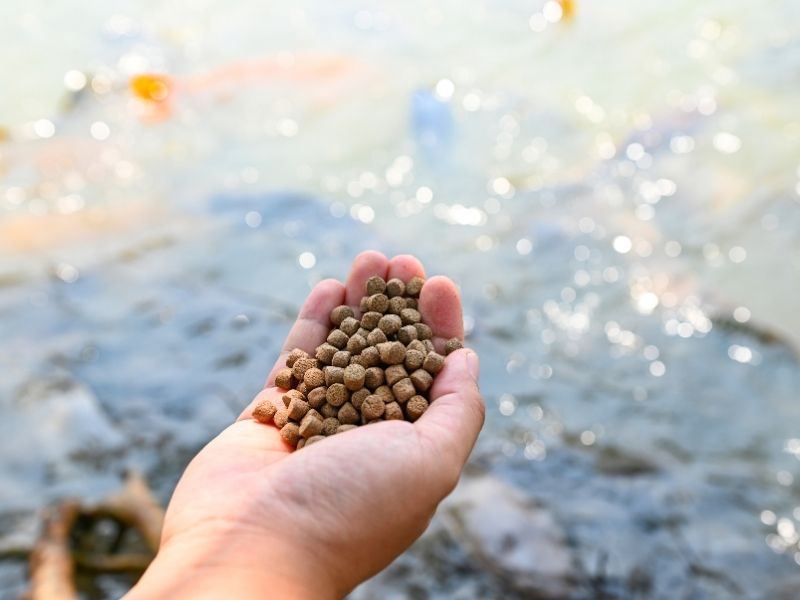
3. Goldfish Bowl and Goldfish Tank: Which is Better?
Tanks are preferred over bowls because they provide greater water quality and more room for growth. Bowls frequently lack appropriate filtration and oxygenation, making them unsuitable for long-term storage.
Why Choose a Tank?
Goldfish should be kept in at least a 20-gallon tank. Larger tanks provide a more stable environment in which goldfish can swim freely. Proper filtration and aeration systems are essential for maintaining water quality. Here’s why a tank works better:
- Filtration: Tanks can house larger, more efficient filters that keep the water clean and oxygenated. Bowls lack space for proper filtration, leading to poor water quality.
- Space: Goldfish grow large and need space to swim. A tank provides ample room, reducing stress and promoting healthy growth.
- Stability: Tanks maintain more stable water parameters. Temperature and pH fluctuations are less pronounced in larger volumes of water.
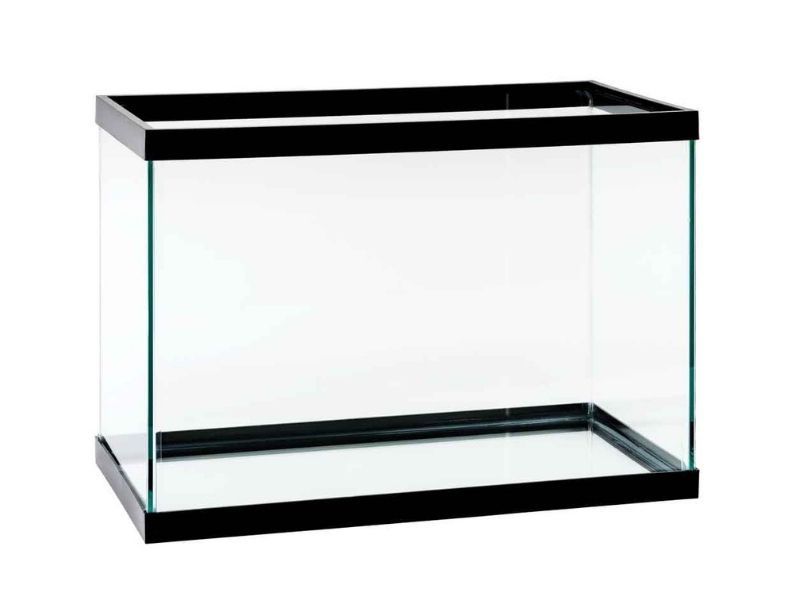
4. What Is an Ideal Tank Setup for Goldfish?
Recommended Size and Water Volume
The minimal size tank for a single goldfish is 20 gallons. For each new goldfish, add 10 gallons. This provides enough area for swimming and proper waste dilution. Here’s the breakdown of tank requirements:
- Single Goldfish: Minimum 20 gallons.
- Two Goldfish: Minimum 30 gallons.
- Three Goldfish: Minimum 40 gallons, and so on.
What Do Goldfish Need in Their Tank?
An appropriate tank setup includes a filtration system that keeps the water clean and oxygenated. Plants, gravel or sand base, and hiding nooks complement the surroundings and create a natural feel. Proper lighting and a heater are also required if the room temperature falls below 15.6 °C (60°F). Here is what to include:
- Filtration System: Choose a filter rated for at least double the tank size. Canister filters or hang-on-back filters are recommended.
- Substrate: Use gravel or sand to cover the tank bottom. These provide a natural look and can house beneficial bacteria.
- Plants and Decorations: Add live or artificial plants, rocks, and ornaments. These provide hiding spots and mental stimulation.
- Lighting: Use an aquarium light to simulate a natural day-night cycle. Goldfish don’t require intense lighting, but it helps in viewing and plant growth.
- Heater: If the room temperature drops below 15.6 °C (60°F), use a heater to maintain a stable temperature between 18 – 24 °C (65-75°F).
What Do Goldfish Like to Play With?
Goldfish enjoy exploring their surroundings, so you can add decorations, tunnels, and floating toys. To provide a dynamic environment, rotate toys and decorations on a regular basis. A bored goldfish is more prone to become stressed or unwell. Here are a few ideas:
- Decorations: Use rocks, caves, and tunnels. These provide hiding spots and encourage exploration.
- Toys: Floating toys and ping-pong balls can entertain goldfish. Ensure they are safe and non-toxic.
- Plants: Live plants like Anubias or Java Ferns offer enrichment and mimic a natural habitat.
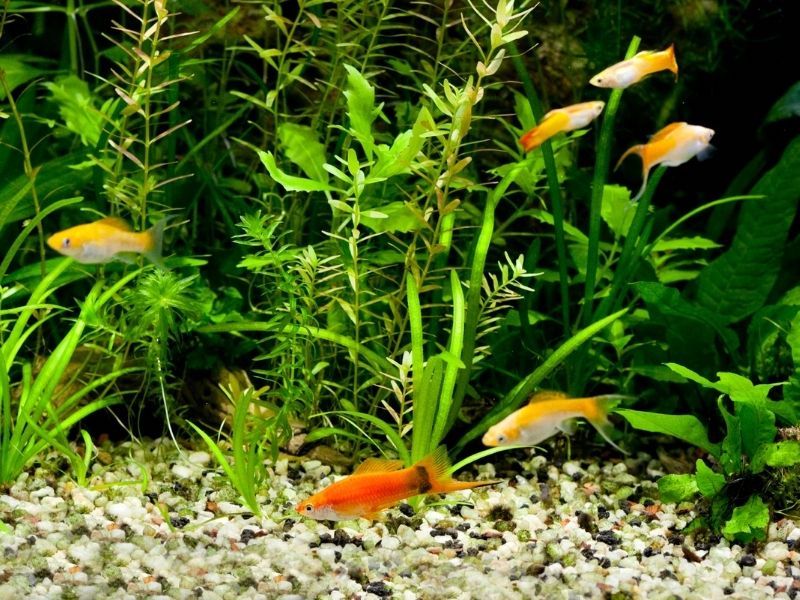
Recommended Tank Mates
Goldfish can live with other fish, but because they are smaller and swim slower, they often avoid becoming prey. Similar-sized goldfish, certain catfish species, and freshwater snails make good aquarium mates. Always check compatibility before adding new tankmates. Here are a few choices:
- Goldfish Varieties: Keep similar-sized goldfish together. Avoid mixing common goldfish with delicate fancy varieties.
- Catfish: Plecos and Corydoras are good choices. They help clean the tank and get along well with goldfish.
- Snails: Nerite snails and mystery snails are beneficial. They help control algae and don’t bother goldfish.
Setting up a fish tank involves careful consideration of tank size, filtration, and water parameters to provide a healthy environment. Choosing suitable fish species, decorating the tank with appropriate ornaments, and maintaining consistent water quality are essential for creating a thriving underwater ecosystem.
5. How to Clean a Goldfish Tank
Keeping your goldfish’s tank clean is crucial for their health and well-being. Regular cleaning minimizes the accumulation of dangerous contaminants and maintains a stable atmosphere. Here’s a comprehensive approach to cleaning a goldfish tank effectively:
How to Clean
What You’ll Need
- Gravel Vacuum: For cleaning the substrate and removing debris.
- Algae Scraper or Pad: To clean the tank walls.
- Bucket: Designated for aquarium use only.
- Water Conditioner: To treat tap water.
- Fish Net: For temporarily relocating fish if necessary.
- Siphon: To assist in water changes.
- Test Kit: To monitor water parameters.
- Filter Media: For filter maintenance.
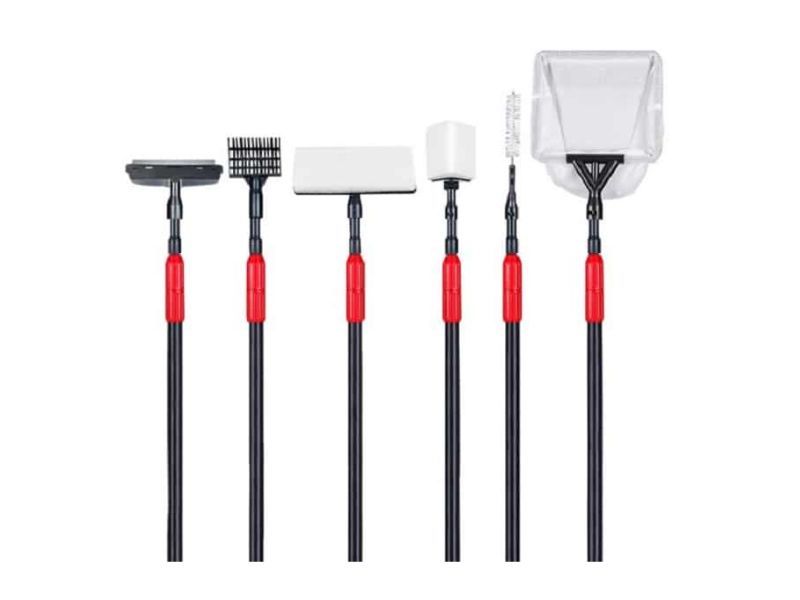
Cleaning Steps
- Prepare your supplies
Collect all of the necessary cleaning tools and supplies. To avoid contamination, make sure your bucket and other aquarium-specific items are only used for aquarium purposes.
- Turn off the electrical equipment
Turn off the tank’s electrical equipment, including filters, heaters, and lights, to eliminate the risk of electric shock and equipment damage during cleaning.
- Remove Debris and Waste
Use a fish net to remove any large debris, uneaten food, or dead plant material from the tank. This helps to limit the quantity of waste in the water.
- Clean the tank walls
Use an algae scraper or pad to clean the tank’s inside walls. Gently wipe away any algae accumulation, taking care not to scratch the glass or acrylic.
- Vacuum the substrate
Use a gravel vacuum to clean the substrate. Insert the vacuum into the gravel and move it around to collect trash and rubbish. This also helps to prevent the accumulation of hazardous chemicals in the gravel.
- Perform a Partial Water Change
- Siphon Water: Use the siphon to drain 20-25% of the tank water. To remove trash and detritus, siphon from the bottom.
- Replace water: Fill the tank with dechlorinated tap water. To avoid stunning the fish, treat the new water with a water conditioner and adjust the temperature of the tank accordingly.
- Clean the filter
- Rinse Media: Rinse the filter media in a pail of tank water to maintain good bacteria. Avoid using tap water, which can destroy these germs.
- Inspect Filter: Examine the filter components for damage or wear. Replace the carbon and other chemical media as necessary.
- Check and clean the decorations
Remove and clean tank decorations, plants, and other items. Rinse them under tap water and scrub off any algae or debris. Avoid using soap or chemicals, as they can harm the fish.
- Reassemble the Tank
Place the cleaned decorations and plants back into the tank. Ensure everything is securely in place to prevent any hazards to the fish.
- Turn On Electrical Equipment
Turn the filter, heater, and lights back on. Check that everything is functioning correctly and that the water flow and temperature are stable.
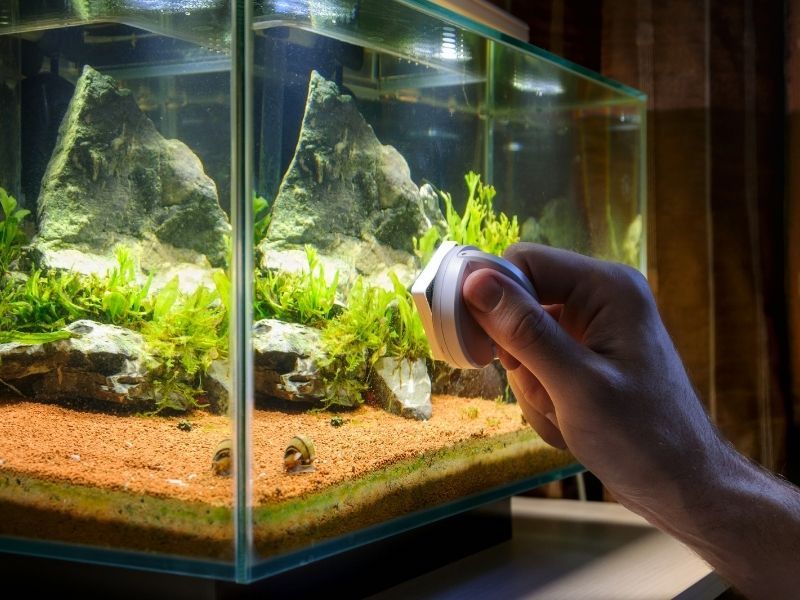
Additional Tips for Cleaning
- Avoid Over-Cleaning: While regular maintenance is essential, over-cleaning might harm the beneficial bacteria in your tank. These bacteria are required to break down waste and maintain a healthy nitrogen cycle.
- Dechlorinate Water: Always use a water conditioner to eliminate chlorine and chloramines from tap water before using it in the tank. Chlorine can damage both goldfish and helpful microbes.
- Monitor Fish Health: While cleaning, thoroughly inspect your goldfish. Look for symptoms of illness, injury, or stress. Early detection of health disorders can prevent them from worsening.
- Stagger Cleaning Tasks: To avoid stressing your fish and disturbing the tank’s biological balance, alternate cleaning tasks. For example, clean the filter media one week and then do a partial water change the following.
- Quarantine New Additions: If you’re adding new fish, plants, or decorations to your tank, quarantine them first. This prevents the entrance of diseases or pests into your existing aquarium.

How Often Should You Clean?
Regular cleaning is essential for maintaining a healthy environment for your goldfish. Consistent maintenance helps prevent the buildup of harmful toxins, keeps the water quality high, and ensures your goldfish thrive. Here’s a detailed breakdown of cleaning tasks and their frequency:
Daily Tasks
- Observation: Spend a few minutes each day observing your goldfish. Check for signs of stress, illness, or unusual behavior. Look for symptoms like clamped fins, white spots, or lethargy.
- Feeding: Feed your goldfish only what they can consume in two minutes, twice a day. Remove any uneaten food after feeding to prevent it from decaying and polluting the water.
Weekly Tasks
- Partial Water Changes: Perform a 20-25% water change each week. Use a gravel vacuum to remove debris and waste from the substrate. This helps maintain water quality by diluting toxins like ammonia and nitrites.
- Water Testing: Test water parameters weekly using a reliable test kit. Monitor levels of ammonia, nitrite, nitrate, pH, and temperature. Ideal levels are:
- Ammonia: 0 ppm
- Nitrite: 0 ppm
- Nitrate: Less than 20 ppm
- pH: 7.0-8.4
- Temperature: 65-75°F
- Algae Removal: Scrub algae from the tank glass, decorations, and plants using an algae scraper or pad. Keeping algae under control improves water quality and tank aesthetics.
Monthly Tasks
- Filter Maintenance: Clean the filter media every 2-4 weeks, depending on the filter type and bioload. Rinse the media in a bucket of tank water to preserve beneficial bacteria. Replace carbon and other chemical media as recommended by the manufacturer.
- Decoration Cleaning: Remove and clean tank decorations monthly. Rinse them under tap water and scrub off any algae or debris. Avoid using soap or chemicals, as they can be harmful to fish.
- Deep Cleaning: Every month, perform a more thorough cleaning of the tank. This includes checking and cleaning all equipment, such as heaters, air pumps, and filters. Ensure all components are functioning correctly.
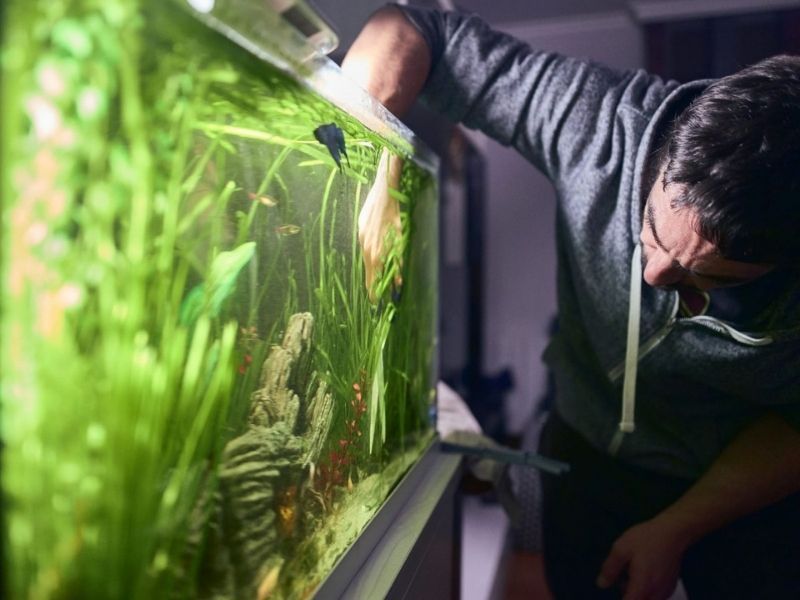
To sum up, once every 3-6 months, consider a major tank overhaul. This involves a comprehensive cleaning of the entire tank, including substrate replacement (if necessary) and a detailed inspection of all equipment. This is also a good time to prune plants and rearrange decorations.
6. What are common health issues for goldfish?
Goldfish may seem like low-maintenance pets, but just like any other living creature, they can suffer from various health problems. Understanding these common goldfish ailments is crucial for keeping your finned friends happy and healthy. Below are some common health issues that fish can be infected with.
| Common health issues | Symptoms | How to cure |
| White Spot (Ich)
|
– Small white spots (0.5-1mm) on fins, gills, and body
– Flashing (rubbing body against objects) – Listlessness – Clamped fins – Loss of appetite |
– Increase water temperature to 25-28°C (78-82°F) for 7-10 days
– Add a commercially available Ich treatment according to instructions – Maintain clean water with frequent partial water changes |
| Swim Bladder Disease
|
– Difficulty swimming or staying upright
– Buoyancy problems (floating upside down or sinking) – Listlessness – Loss of appetite |
– Feed shelled peas (remove shell) a few times a week
– Epsom salt baths (1 tablespoon per 10 gallons for 15 minutes, repeat after 3 days if needed) – Ensure good water quality with regular water changes and proper filtration – Consult a veterinarian for severe cases |
| Fin Rot
|
– Frayed or tattered edges on fins
– Redness or discoloration of fins – Clamped fins (held close to body) – Secondary bacterial infections |
– Clean and maintain water quality with frequent partial water changes
– Remove uneaten food promptly – Use an aquarium salt treatment (1 teaspoon per 5 gallons) for 3-5 days – If bacterial infection is suspected, use a broad-spectrum antibiotic medication |
| Cotton Mouth
|
– White cotton-like growth on mouth or gills
– Difficulty breathing (rapid gill movement) – Listlessness – Clamped fins |
– Use a medication specifically for fungal infections according to instructions
– Maintain clean water conditions with frequent partial water changes – Improve water quality with proper filtration and aeration |
| Lice & Worms
|
– Visible lice or worms attached to body or gills
– Flashing – Loss of weight – Lethargy |
– Use a medication specifically for parasites according to instructions
– Quarantine infected fish to prevent spread – Maintain clean water conditions with frequent partial water changes – Improve water quality with proper filtration |
The Bottom Line
To sum up, caring for goldfish entails understanding their requirements and providing an appropriate habitat. Goldfish care for beginners involves selecting the right tank size, maintaining water quality, providing a balanced diet, and considering compatible tank mates. By following this guide, you can ensure that your goldfish have long and healthy lives. Remember that consistency and attention to detail are essential for effective goldfish care. Happy fishkeeping!


